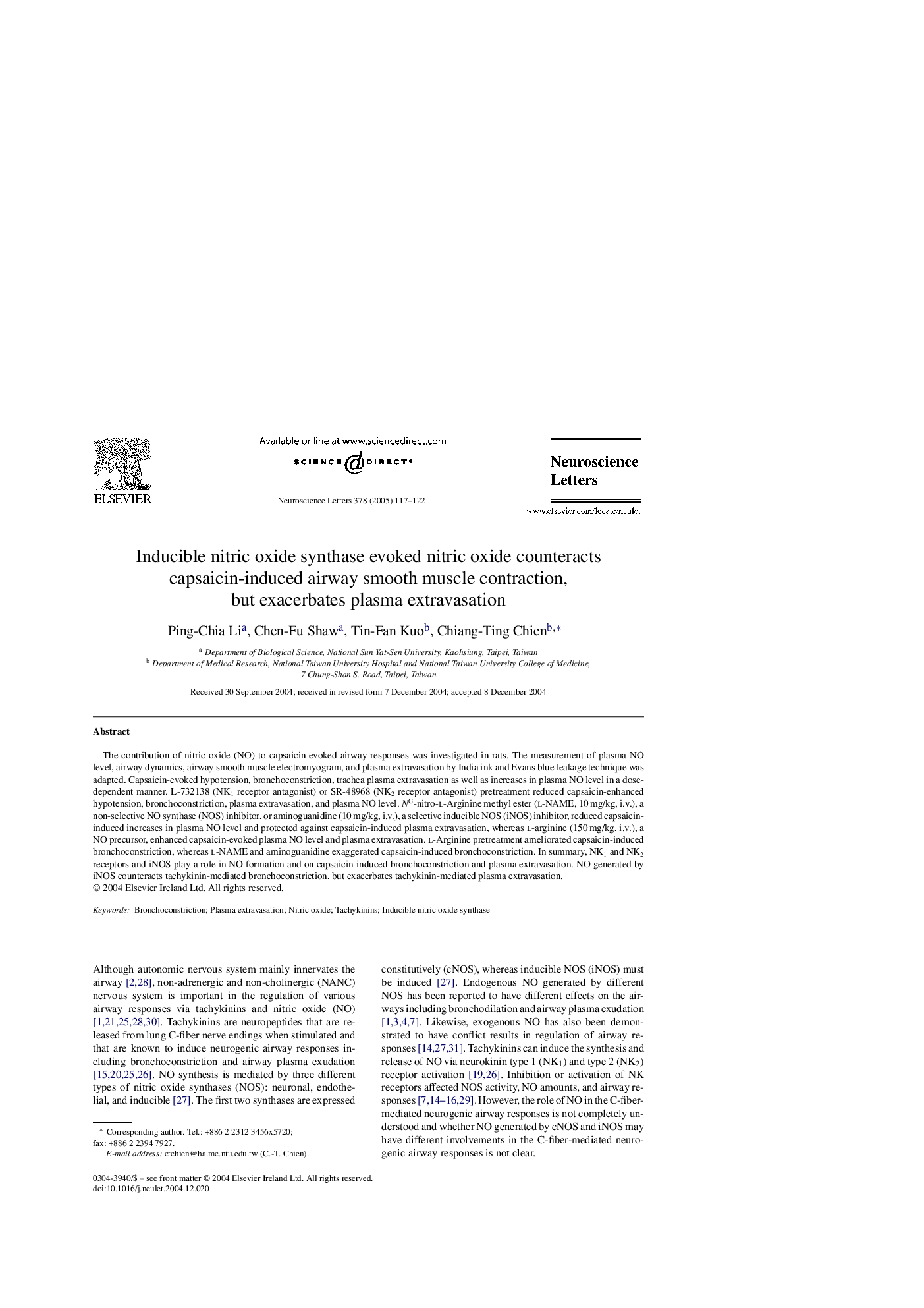| Article ID | Journal | Published Year | Pages | File Type |
|---|---|---|---|---|
| 9429482 | Neuroscience Letters | 2005 | 6 Pages |
Abstract
The contribution of nitric oxide (NO) to capsaicin-evoked airway responses was investigated in rats. The measurement of plasma NO level, airway dynamics, airway smooth muscle electromyogram, and plasma extravasation by India ink and Evans blue leakage technique was adapted. Capsaicin-evoked hypotension, bronchoconstriction, trachea plasma extravasation as well as increases in plasma NO level in a dose-dependent manner. L-732138 (NK1 receptor antagonist) or SR-48968 (NK2 receptor antagonist) pretreatment reduced capsaicin-enhanced hypotension, bronchoconstriction, plasma extravasation, and plasma NO level. NG-nitro-l-Arginine methyl ester (l-NAME, 10Â mg/kg, i.v.), a non-selective NO synthase (NOS) inhibitor, or aminoguanidine (10Â mg/kg, i.v.), a selective inducible NOS (iNOS) inhibitor, reduced capsaicin-induced increases in plasma NO level and protected against capsaicin-induced plasma extravasation, whereas l-arginine (150Â mg/kg, i.v.), a NO precursor, enhanced capsaicin-evoked plasma NO level and plasma extravasation. l-Arginine pretreatment ameliorated capsaicin-induced bronchoconstriction, whereas l-NAME and aminoguanidine exaggerated capsaicin-induced bronchoconstriction. In summary, NK1 and NK2 receptors and iNOS play a role in NO formation and on capsaicin-induced bronchoconstriction and plasma extravasation. NO generated by iNOS counteracts tachykinin-mediated bronchoconstriction, but exacerbates tachykinin-mediated plasma extravasation.
Keywords
Related Topics
Life Sciences
Neuroscience
Neuroscience (General)
Authors
Ping-Chia Li, Chen-Fu Shaw, Tin-Fan Kuo, Chiang-Ting Chien,
